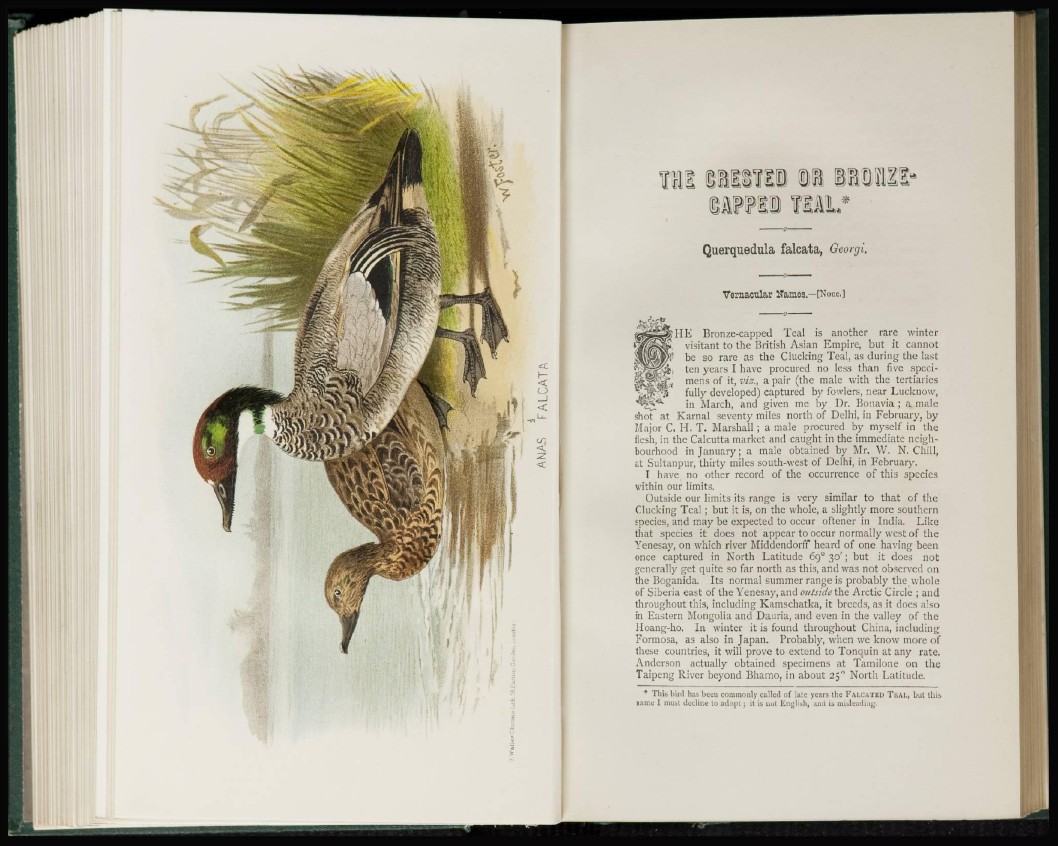
Till lllSfll I i IMS»
UWWB TOIL*
Querquedula falcata, Qeorgi,
Vernacular Harnes.—[None.] §HE Bronze-capped Teal is another rare winter
visitant to the British Asian Empire, but it cannot
be so rare as the Clucking Teal, as during the last
ten years I have procured no less than five specimens
of it, vis., a pair (the male with the tertiaries
fully developed) captured by fowlers, near Lucknow,
in March, and given me by Dr. Bonavia ; a male
shot at Karnal seventy miles north of Delhi, in February, by
Major C H. T. Marshall ; a male procured by myself in the
flesh, in the Calcutta market and caught in the immediate neighbourhood
in January ; a male obtained by Mr. W. N. Chill,
at Sultanpur, thirty miles south-west of Delhi, in February.
I have no other record of the occurrence of this species
within our limits.
Outside our limits its range is very similar to that of the
Clucking Teal; but it is, on the whole, a slightly more southern
species, and may be expected to occur oftener in India. Like
that species it does not appear to occur normally west of the
Yenesay, on which river Middendorff heard of one having been
once captured in North Latitude 69° 30'; but it does not
generally get quite so far north as this, and was not observed on
the Boganida. Its normal summer range is probably the whole
of Siberia east of the Yenesay, and outside the Arctic Circle ; and
throughout this, including Kamschatka, it breeds, as it does also
in Eastern Mongolia and Dauria, and even in the valley of the
Iloang-ho. In winter it is found throughout China, including
Formosa, as also in Japan. Probably, when we know more of
these countries, it will prove to extend to Tonquin at any rate.
Anderson actually obtained specimens at Tamilone on the
Taipeng River beyond Bhamo, in about 2 5 ° North Latitude.
* This bivd has been commonly called of late years the FALCATJED TiiAL, but this
name I must decline to adopt; it is not English, and is misleading.